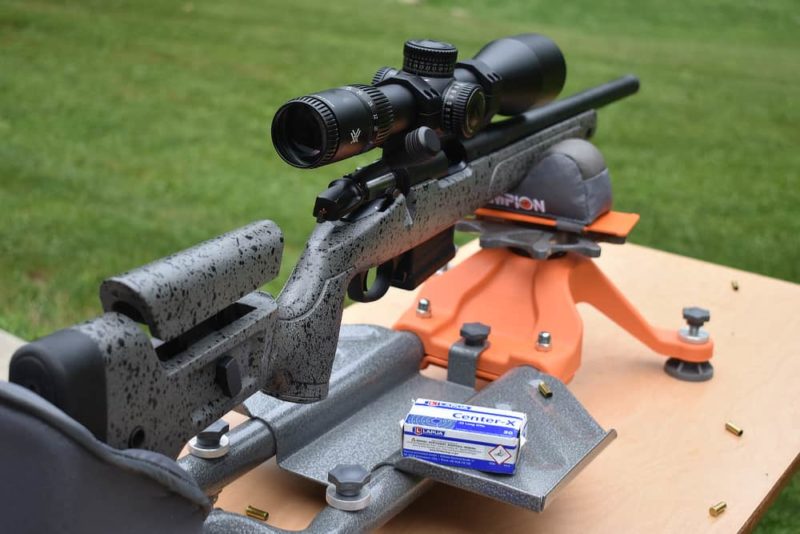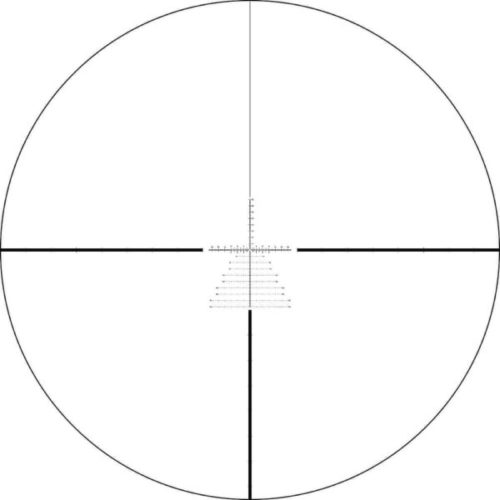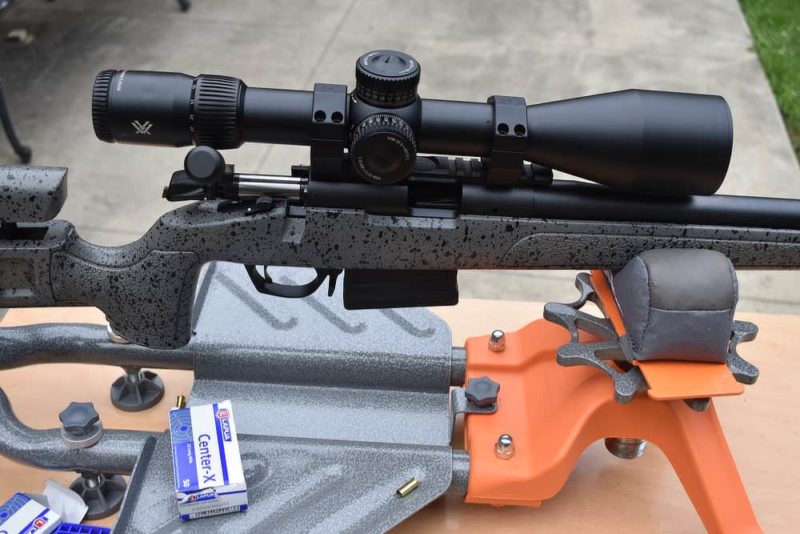Vortex Venom 5-25 x 56 FFP
Entry-Level Precision Rifle Scope
How far can you push a .22 LR? In recent years more and more are asking this question and events have popped up challenging shooters to do just that – make long distance shots beyond the limits of what a .22 LR was formerly believed to be able to achieve. Equipment becomes just as important as marksmanship when pushing a rimfire cartridge out to two football fields.
Above all, you need to be able to make consistent shots. This means a good barrel, quality ammunition and clear glass. All work together towards accuracy, but without one of the pieces, the rest falls apart. You won’t be able to tell if the ammunition isn’t grouping, if something is wrong with the gun, or if the rifle is sighted in without being able to call your shots. Some people can do so with iron sights, others need an optic. It also depends on what you plan on doing and how valuable accuracy is to you. Is your goal to hit a steel target or center punch paper?
Reticles with holdover points and various subtensions have exploded in popularity, allowing people to engage multiple targets quickly and without dialing. This is seen primarily on the precision rifle scene, though it is working its way into all-purpose shooting.
The recently released Vortex Venom 5-25 x 56 FFP scope is designed as an entry-level optic for those looking to further explore long-range shooting. The 35-oz. scope is not intended just for rimfire, though many, including myself, have used it for this purpose. The scope will help you reach out to 1,000 yards and beyond, with an adjustable parallax from 15 yards to infinity. The Venom is available in MOA and Mils with the EBR-7C reticle. It is most important to understand the system of adjustments your scope uses. I am far more comfortable with MOA corrections.
If you plan to engage targets of various shapes and sizes at different distances, FFP gives you a huge advantage. In a first focal plane scope (FFP), the reticle is placed in front of the magnification lenses and erector assembly. This means it is magnified along with the image and subtensions remain accurate regardless of magnification. With a second-focal plane scope, the zero changes with changes in magnification. One disadvantage of FFP is the reticle is small when not at full power.
The Vortex Venom has a 21′ field of view at 5x magnification compared to 4.7′ at the maximum 25x magnification. An optional and adjustable throw lever allows for swift changes between magnification settings. The venom also features Vortex’s RevStopTM zero system, which allows you to set the index mark zero to any distance zero you choose. Unlike many zero-stop systems, the RevStopTM Zero System still allows 1.25 MOA/0.5 MRAD of travel below the original zero point to allow for closer shots and zero shifts. The zero indicator on the windage knob can also be reindexed.
I mounted this scope on my Bergara B-14R, looking to make shots out to 200 yards with a .22LR but retain the possibility of using the rifle and scope for precision rimfire competitions. Though at first the scope seemed a bit big, I quickly appreciated the large field of view. The glass was so clear I wouldn’t have realized I was looking through it were it not for magnification and the reticle. It is also important you understand the system your scope uses, MOA or mils, in order to properly use hold-overs, subtensions and make adjustments.
For anyone looking to shoot long-distance or to vary their target sizes, distances and shapes, the Vortex Venom is a durable and repeatable option with a lifetime warranty. It has become a great entry-level option for precision rifle series rimfire and center-fire shooters, with an MSRP of $699.99.





